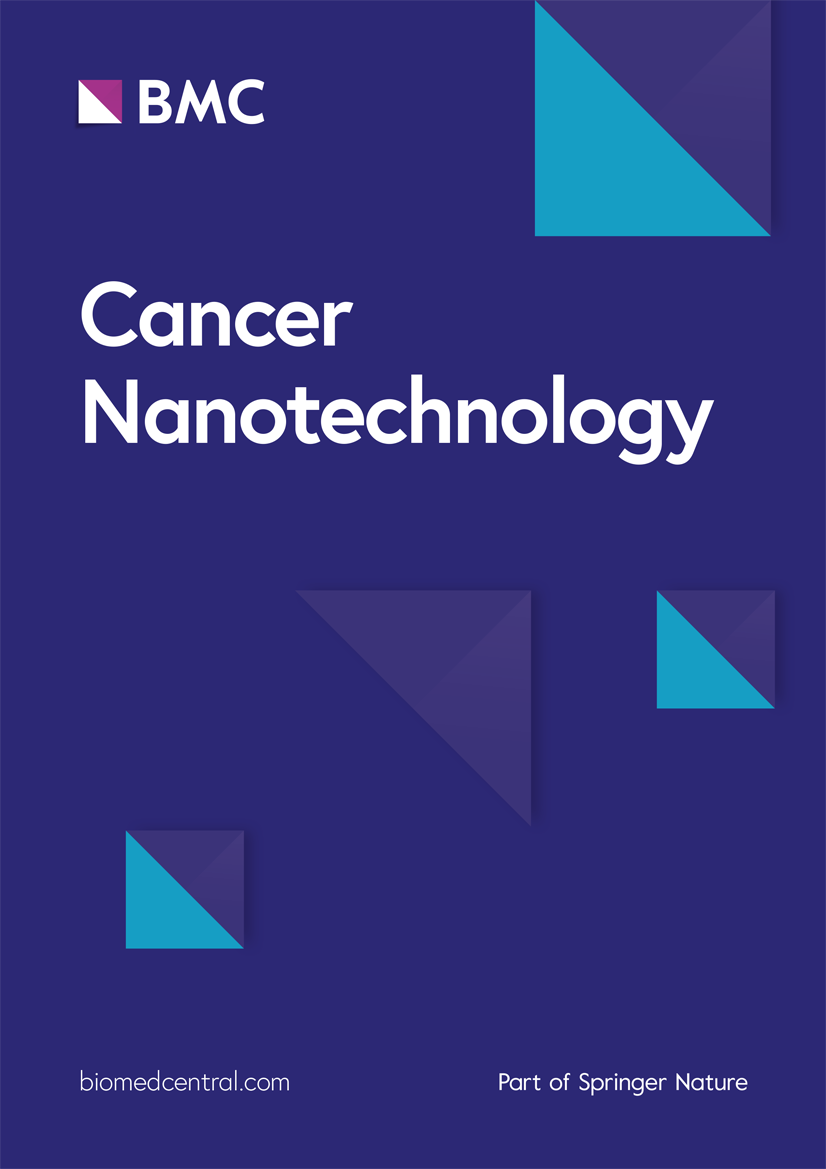As1411-modified liposomes to enhance drug utilization and augment the anti-tumor efficacy
IF 4.8
2区 工程技术
Q2 NANOSCIENCE & NANOTECHNOLOGY
引用次数: 0
Abstract
The utilization of liposomes in drug delivery has garnered significant attention due to their efficient drug loading capacity and excellent biocompatibility, rendering them a promising platform for tumor therapy. However, the average size of liposomes ~ 100 nm leads to liposomes being susceptible to hepatic and renal metabolism to excretion outside the body leading to poor drug delivery efficiency with a total utilization rate of less than 0.7%, resulting in unfavorable treatment outcomes. We have developed a novel liposome platform equipped with tumor surface nucleolin-targeting capacity to enhance drug accumulation at the tumor in vivo. The encapsulation of doxorubicin through thin film hydration has resulted in the formation of D@L-AS1411. Through in vivo experiments, we have demonstrated the effective accumulation of D@L-AS1411 at the tumor site and its ability to improve doxorubicin utilization rates by 40%. Additionally, D@L-AS1411 induces immunogenic death of tumor cells, release of tumor-associated antigens, upregulation of calreticulin expression, and recruitment of active T cell infiltration, and ultimately improves the therapeutic efficacy against tumors (70%). Based on the nucleic acid aptamer AS1411, D@L-1411 is developed to specifically enhance the accumulation of Dox at tumor sites, thereby inhibiting and enhancing the anti-tumor effect. In summary, this study not only provides an efficient tumor-targeting delivery platform but also contributes to the improvement of chemotherapy–immunotherapy combination for tumor treatment strategy in the clinic.As1411 改性脂质体提高药物利用率并增强抗肿瘤疗效
脂质体具有高效的载药能力和良好的生物相容性,是一种前景广阔的肿瘤治疗平台,因此,利用脂质体给药已引起广泛关注。然而,由于脂质体的平均尺寸约为 100 nm,因此脂质体容易被肝脏和肾脏代谢排出体外,导致药物输送效率低下,总利用率低于 0.7%,造成不利的治疗结果。我们开发了一种新型脂质体平台,该平台具有肿瘤表面核苷酸靶向能力,可增强药物在体内肿瘤处的蓄积。通过薄膜水合包封多柔比星,形成了 D@L-AS1411。通过体内实验,我们证明了 D@L-AS1411 在肿瘤部位的有效蓄积,并能将多柔比星的利用率提高 40%。此外,D@L-AS1411 还能诱导肿瘤细胞免疫性死亡、释放肿瘤相关抗原、上调钙调蛋白表达、招募活性 T 细胞浸润,最终提高对肿瘤的疗效(70%)。基于核酸适配体 AS1411 开发的 D@L-1411 可特异性增强 Dox 在肿瘤部位的蓄积,从而抑制和增强抗肿瘤效果。总之,这项研究不仅提供了一种高效的肿瘤靶向递送平台,而且有助于改进化疗-免疫疗法联合治疗肿瘤的临床策略。
本文章由计算机程序翻译,如有差异,请以英文原文为准。
求助全文
约1分钟内获得全文
求助全文
来源期刊

Cancer Nanotechnology
Pharmacology, Toxicology and Pharmaceutics-Pharmaceutical Science
CiteScore
5.20
自引率
1.80%
发文量
37
审稿时长
15 weeks
期刊介绍:
Aim:
Recognizing cancer as a group of diseases caused by nanostructural problems (i.e. with DNA) and also that there are unique benefits to approaches inherently involving nanoscale structures and processes to treat the disease, the journal Cancer Nanotechnology aims to disseminate cutting edge research; to promote emerging trends in the use of nanostructures and the induction of nanoscale processes for the prevention, diagnosis, treatment of cancer; and to cover related ancillary areas.
Scope:
Articles describing original research in the use of nanostructures and the induction of nanoscale processes for the prevention, diagnosis and treatment of cancer (open submission process). Review, editorial and tutorial articles picking up on subthemes of emerging importance where nanostructures and the induction of nanoscale processes are used for the prevention, diagnosis and treatment of cancer.
 求助内容:
求助内容: 应助结果提醒方式:
应助结果提醒方式:


